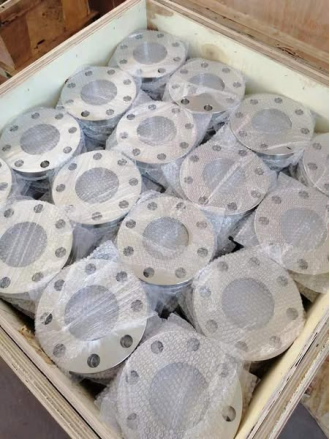When you think of mechanical engineering, you probably think of gears, bolts, and even some stuffy engineers in white coats. But let’s not forget the industry’s unsung heroes: flanges! Yep, those round pieces of metal that hold everything together. If you’ve ever been curious about the different types of flanges and their applications, you’ve come to the right place. If you’re looking for a reliable flange manufacturer, look no further than Jindalai Steel Group Co., Ltd. Their flanges will make your heart race (or at least keep your machinery running smoothly).
Flange Types: A Brief Overview
1. Weld Neck Flange: This is the hard-core member of the flange family. It’s designed to be welded directly to the pipe, creating a secure, leak-proof connection. Ideal for high-pressure applications, it’s like a bouncer at a club—keeping everything secure and reliable.
2. Slip-on flange: A slip-on flange is a simpler flange that simply slides in. It’s easy to install and is often used in low-pressure applications. But remember, it’s not as strong as a butt-weld flange, so don’t expect it to withstand heavy lifting.
3. Socket Weld Flange: The socket weld flange is a bit of a hybrid. It’s like the cool kid who fits in with both the hardcore and casual styles. Socket weld flanges are used for small-diameter pipes and offer a secure connection, but they require more skill to install.
4. Blind Flange: A blind flange is a more introverted type of flange, lacking a central hole. It’s used to seal the ends of piping systems and is ideal for maintenance and inspection. Think of it like a “Do Not Disturb” sign on a pipe.
Application scenario: Flange highlights
Flanges are used across a wide range of industries, from oil and gas to food processing. They’re the backbone of piping systems, ensuring everything stays connected and leak-free. Whether you’re conveying hot steam or cold beverages, there’s a flange that’s right for you.
For example, in the oil and gas industry, welding neck flanges are often used due to their ability to withstand high pressures. Meanwhile, slip-on flanges may also be found in less demanding environments, such as your local brewery, where they help keep the beer flowing and avoid any unnecessary leaks.
Advantages and disadvantages of flanges in mechanical engineering
Now, let’s think about it. Flanges, like other mechanical parts, have their advantages and disadvantages.
advantage:
- Ease of Installation: Most flanges are relatively easy to install, which means less time spent on assembly and more time drinking coffee (or whatever engineers do for fun).
- Versatility: Flanges come in a variety of styles and can be used in a wide range of applications, making them the preferred choice of engineers around the world.
- Leak Prevention: Well-installed flanges prevent leaks, which is critical to maintaining system integrity and safety.
shortcoming:
- Cost: Depending on the type and material of the flange, this can be expensive. But you get what you pay for, right?
- Space Requirements: Flanges take up more space than other connection methods, which can be a problem in tight spaces.
- Potential for Corrosion: If not properly maintained, flanges can corrode over time, leading to leaks and other problems.
In short, flanges may not be the flashiest components in mechanical engineering, but they’re crucial. So, the next time you admire a well-functioning piping system, take a moment to admire the flanges that connect it all. If you need high-quality flanges, remember that Jindalai Steel Group Co., Ltd. is dedicated to protecting you (and your pipes). Flanges, hello!
Post time: Sep-08-2025









